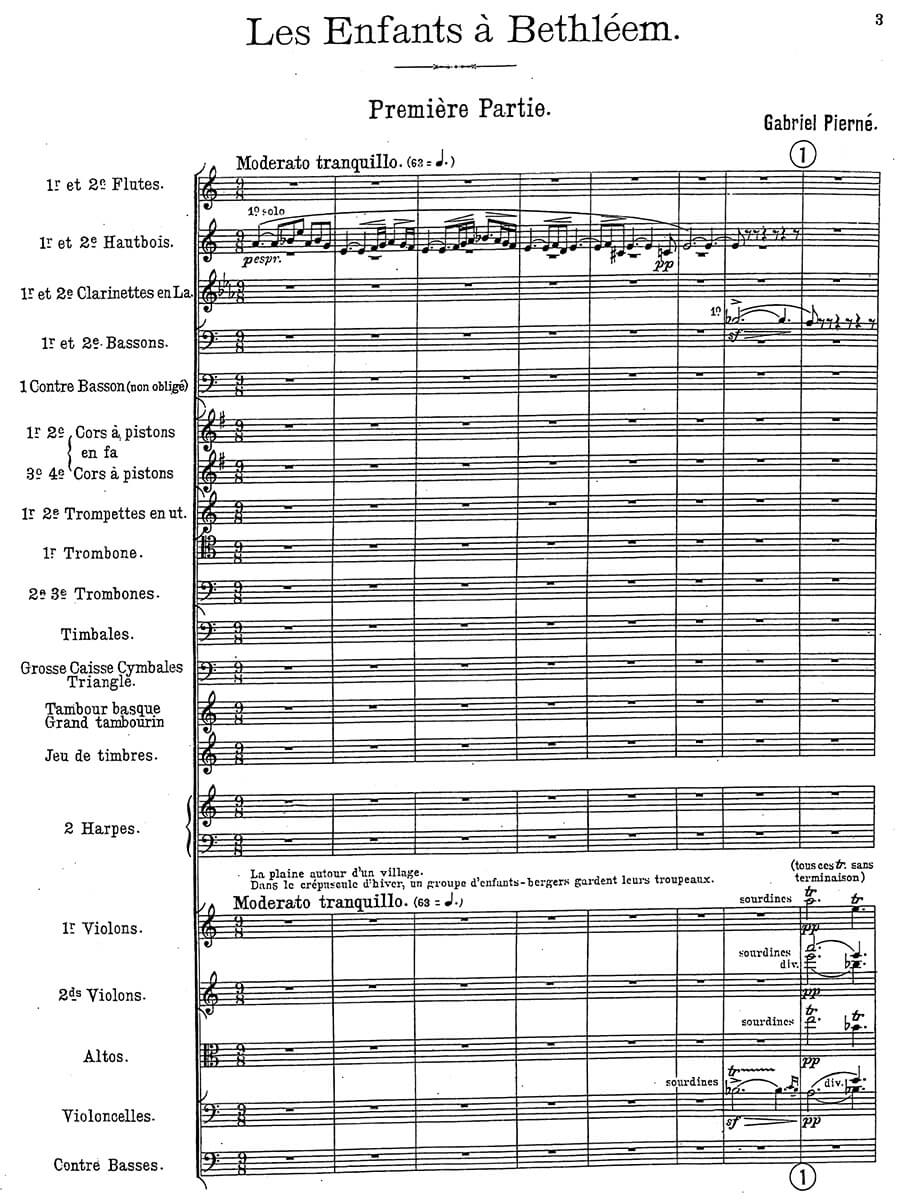Les enfants à Bethléem, Mystère en deux Parties pour Soli, Choeurs d’Enfants et Orchestre
Pierné, Gabriel
33,00 €
Preface
Gabriel Pierné – Les enfants à Bethléem
(b. Metz, Lorraine, 16 August 1863 – d. Ploujean, Brittany, 17 July 1937)
Preface
From an early age, Gabriel Pierné circulated among France’s finest musicians; he attended the Paris Conservatoire with fellow student Claude Debussy (1862-1918), studied composition with Jules Massenet (1842-1912), and took counterpoint and organ lessons with César Franck (1822-1890), succeeding him in his post of organist at Sainte-Clotilde Basilica from 1890-1898. Pierné won France’s Prix de Rome for composition in 1882 and composed throughout his lifetime, but gained a reputation for his work with the Orchestre de Concerts Colonne, of which he became the chief conductor in 1910. Pierné promoted French music, conducting first performances of works by Debussy, Maurice Ravel (1875-1937), Albert Roussel (1869-1937), and members of Les Six, especially Darius Mihaud (1892-1974) and Arthur Honegger (1892-1955). He was also an important early supporter of Igor Stravinsky (1882-1971), conducting the world premiere of The Firebird with the Ballets Russes in 1910. Pierné recorded many of his own compositions in the early 1930s, in addition to promoting and recording the work of Stravinsky and several French composers.
Pierné sought to reconcile an adherence to the classical form favored by early ars gallica composers Camille Saint-Saëns (1835-1921) and César Franck with modern techniques introduced by fin de siècle and early 20th century French composers. His early compositional style is strongly influenced by Massenet’s focus on melody, Franck’s partiality to religious music, and Saint-Saëns’ adherence to classical form. However, Pierné enjoyed experimenting with modern techniques and was not afraid to infuse his pieces with highly chromatic harmonies.
Les enfants à Bethléem, a mystère en deux Parties created for soloists, children’s choir, and speaking narrator, premiered at the Concertgebouw in Amsterdam in April 1907. This oratorio followed the success of Pierne’s most popular piece in his lifetime, Les croisade des enfants, another religiously themed work that was first performed in Paris in 1905. In both pieces, Pierné employs a sort of ethereal mysticism, reflecting stylistic elements commonly present in music by Debussy and Gabriel Fauré (1845-1924) at the time. Gabriel Nigond (1877-1937), a regular collaborator of Pierné, created the text for Les enfants à Bethléem. The two-act oratorio, based on the Nativity, focuses on child shepherds who encounter the Magi and decide to join them in their quest to find the Christ Child. The narrator offers spoken word, but the story is mainly propelled by the children’s choir and soloists representing the Star, shepherds, Virgin Mary, a donkey, and an Ox. The modal, understated score emphasizes the text, yet also provides layers of shimmering, translucent harmonies and planing parallel chords that create a mystical atmosphere that surrounds the singers and audience.
Amy J. Hunsaker, 2019
For hiring the parts please get in contact to the publisher Heugel, Paris.
Score Data
| Genre | Choir/Voice & Orchestra |
|---|---|
| Size | 210 x 297 mm |
| Printing | Reprint |
| Pages | 132 |
